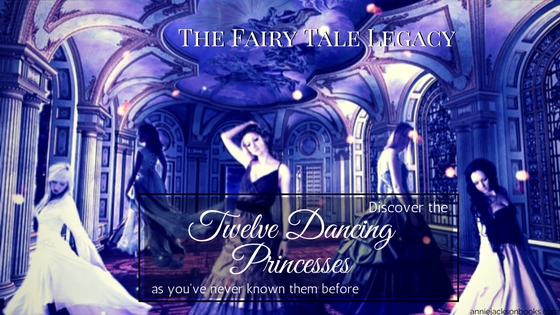We have this false idea that fairy tales are about weak and passive heroines, damsels in distress. So we are always fighting against a fairy tale legacy that doesn’t exist.
The Twelve Dancing Princesses was one of my favorite stories as a child. I liked the dancing and the sisters and that it seemed different from so many of the “typical” fairy tales like Snow White and Sleeping Beauty and especially Cinderella. What I discovered in researching it for this post is that it may be one of the quintessential fairy tale legacies. Even without a Disney movie.
Because most versions turn the princesses into victims which neither the Brothers Grimm or Andrew Lang did.
We all think we know the story – these poor girls forced to dance every night until their shoes are riddled with holes. So many princes try to uncover their secret and fail. Until a poor soldier learns the truth and in speaking it sets them free.
Robin McKinley (The Twelve Dancing Princesess), Heather Dixon (Entwined), Jessica Day George (Princess of the Midnight Ball) and more incorporate that curse. Some of them even trace the curse back to the princesses’ mother. Perhaps because a darker story is more interesting. Perhaps because a curse creates a source of conflict that authors are comfortable with.
But in placing these girls under a curse, it becomes one of the few fairy tales where the heroines truly have something to be saved from. They are damsels in distress; powerless to turn the tide of their own fate.
Many recent novelizations of the story try to give the princesses more agency. In one form or another they contribute to the defeat of the evil king or princes who have them bound. Heather Dixon lets them defy The Keeper. Jessica Day George has them working together to fight the King Under Stone. And Juliet Marillier (if I remember correctly) lets one of the girls fight for herself.
Like Sleeping Beauty, the strength and ingenuity and independence of these girls is in the retelling.
But if you go back far enough, back to the original stories, these are not princesses dependent on a retelling to make them strong.
In the original stories, there is no curse. There is no evil fey king keeping them bound at night in his other worldly kingdom. They dance because they love it. They trick the princes to keep their secret; because they want to keep dancing. And if there is no curse, there is nothing to save them from. They are not the victims, they are the masterminds propelling this story forward.
Which, to me, is actually a much more interesting sort of conflict. Rather than being bound by some evil man, intent on possessing them, they are as close to villains as there is in the whole story. Malicious in varying degrees – depending on if you read the Brothers Grimm (who actually have the softer version) or Charles Deulin which is the version Andrew Lang includes in the Red Fairy Book. Finally undone by the most unlikely hero who gives them something to love more than dancing.
It’s an incredibly interesting and powerful story. It’s an intriguing fairy tale because the princesses aren’t actually heroines. And it’s the classic fairy tale legacy because authors are trying so hard to create agency for these princesses, to empower them when they’re already the most powerful characters in the story.
Want to refresh your memory of the fairy tale? SurLaLune fairy tales has an annotated version of the Brothers Grimm tale.

THE FAIRY TALE LEGACIES
Sleeping Beauty | Cinderella | Beauty and the Beast | The Little Mermaid | Snow White and Rose Red | Rapunzel | Jasmine | Twelve Dancing Princesses | Snow White | The Snow Queen | Overview

